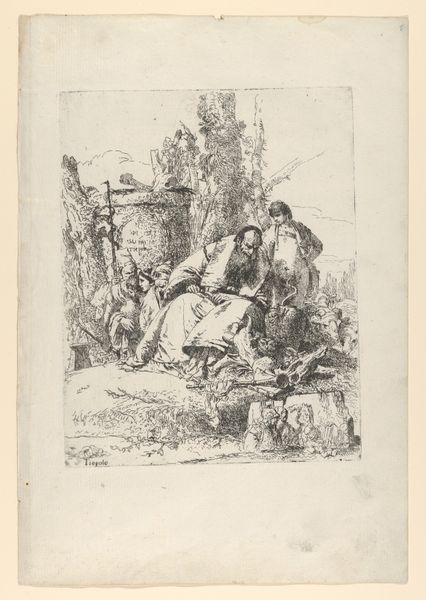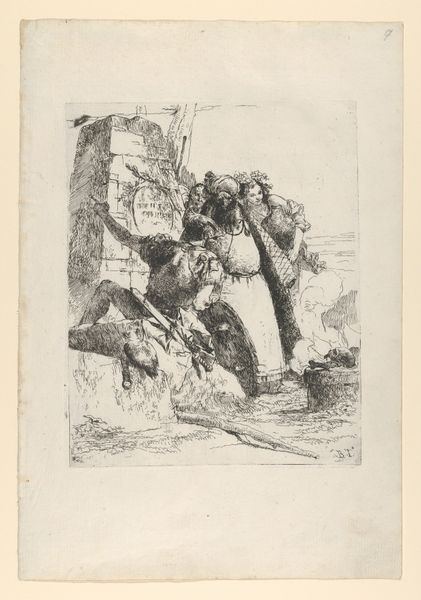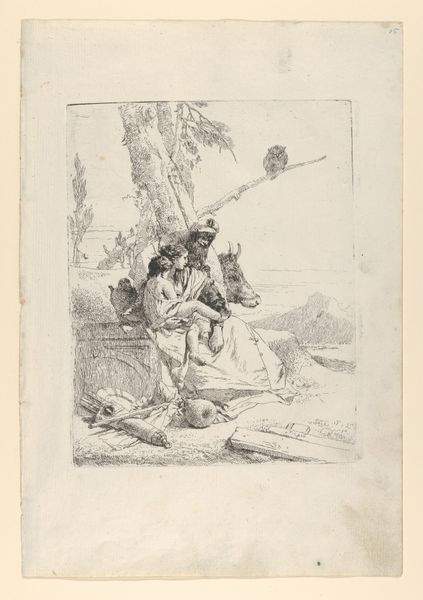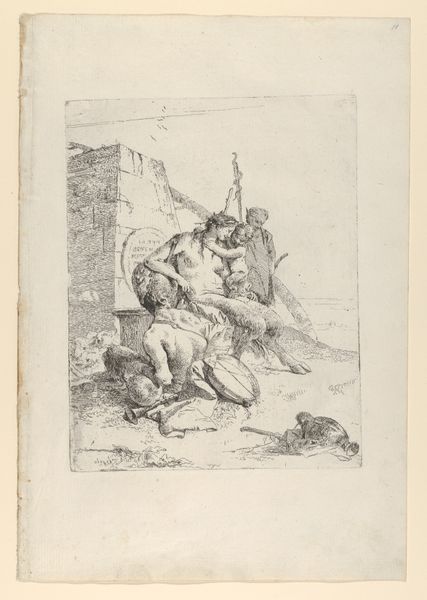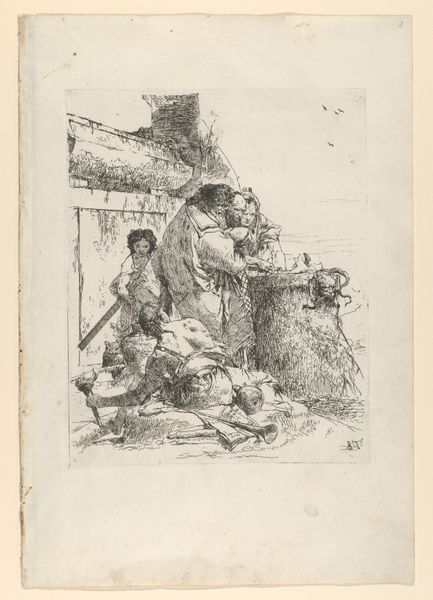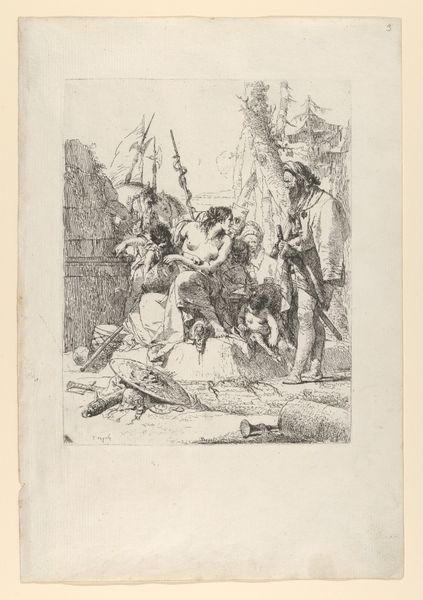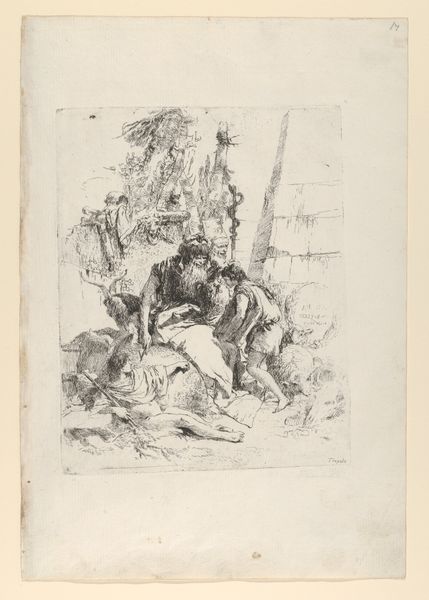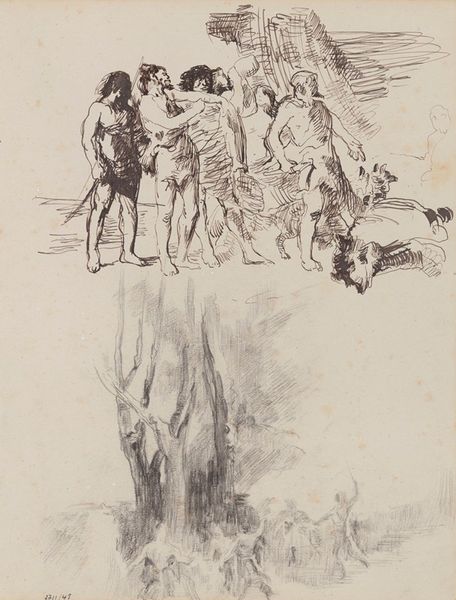
The Discovery of the Tomb of Punchinello, from the Scherzi 1738 - 1755
0:00
0:00
drawing, print, etching
#
drawing
#
baroque
# print
#
etching
#
figuration
#
genre-painting
#
history-painting
Dimensions: Plate: 9 1/8 x 7 3/16 in. (23.1 x 18.2 cm) Sheet: 13 9/16 x 9 5/16 in. (34.4 x 23.7 cm)
Copyright: Public Domain
Editor: This is "The Discovery of the Tomb of Punchinello" by Giovanni Battista Tiepolo, an etching done sometime between 1738 and 1755. There's a real sense of drama in the light and shadow, and the composition feels very dynamic. What stands out to you most in this piece? Curator: What I find most compelling is the manipulation of line and space. Consider the artist's etching technique. Note how he employs varying densities of hatching and cross-hatching to articulate form and volume. Observe how the strategic deployment of stark contrasts serves not only to illuminate certain figures but also to recede others into shadow, thereby enhancing the illusion of depth. What does the serpentine form in the lower left contribute? Editor: It seems to act as a visual pointer, leading the eye back into the main scene, and maybe suggests deception, death or transformation with the discovery. So you're saying it's not just what is depicted, but how it's depicted that matters? Curator: Precisely. Consider also the composition, structured on a series of diagonals. From the bottom left corner upwards toward the center. Note how this arrangement introduces movement. How would the work change if this was presented in a different geometrical organisation? Editor: I hadn't thought about it in those terms. It could become flat or less dramatic with other visual decisions. It feels much more constructed and purposeful now. Thanks. Curator: Indeed. Appreciating how Tiepolo has organized these formal elements offers a richer understanding. Editor: It definitely sheds a new light. I learned how intentional the compositional choices are.
Comments
No comments
Be the first to comment and join the conversation on the ultimate creative platform.
